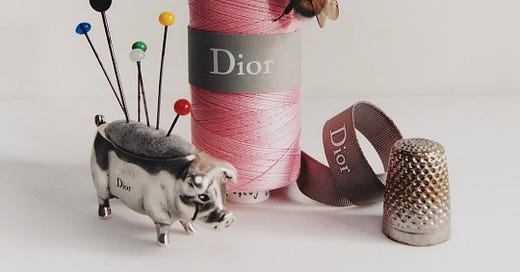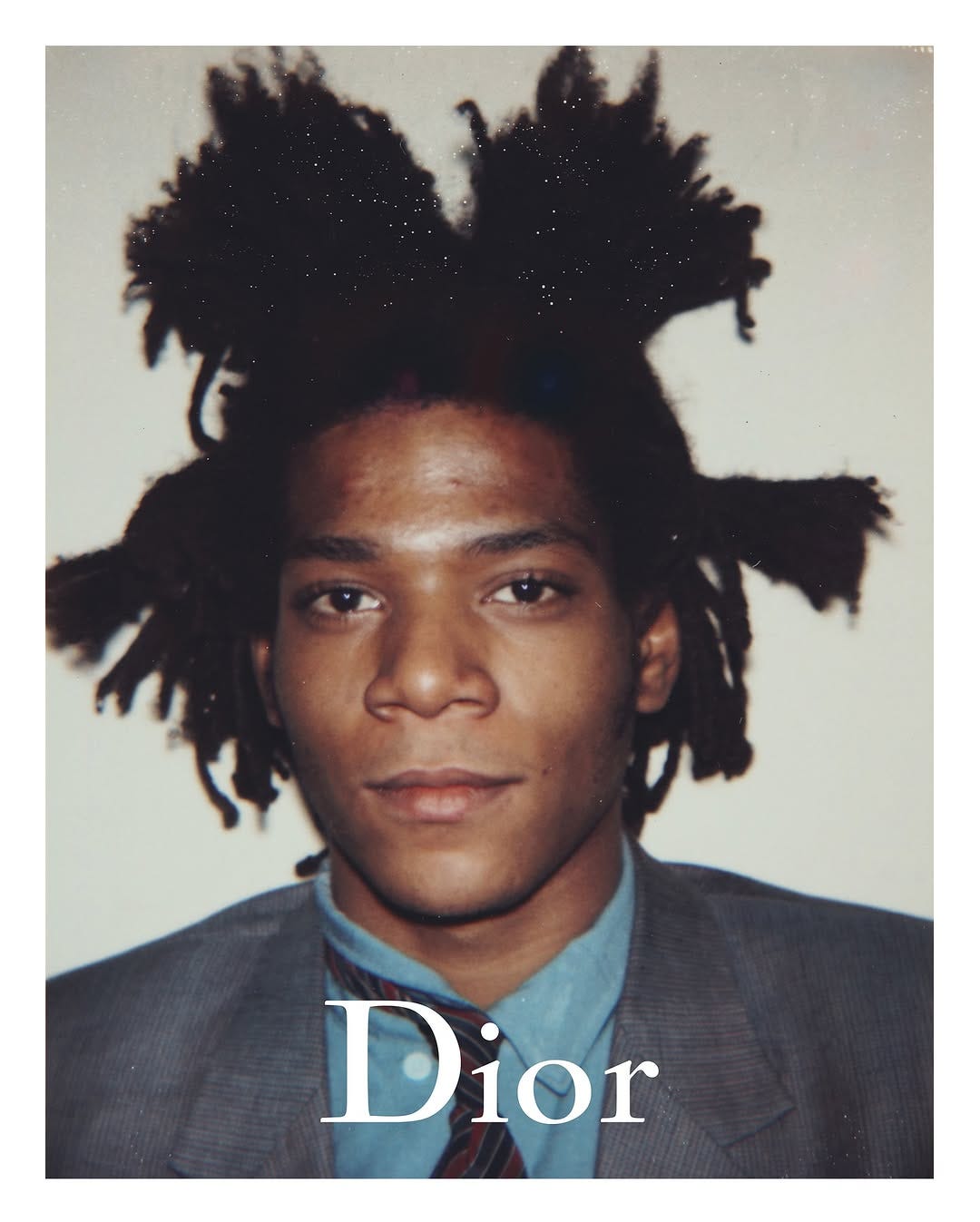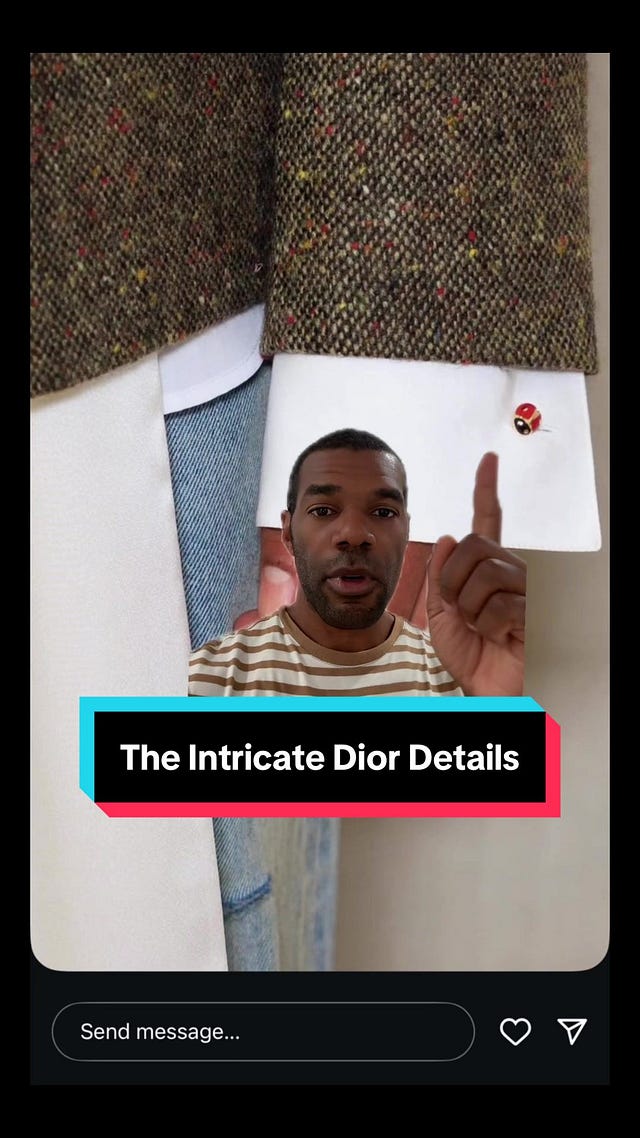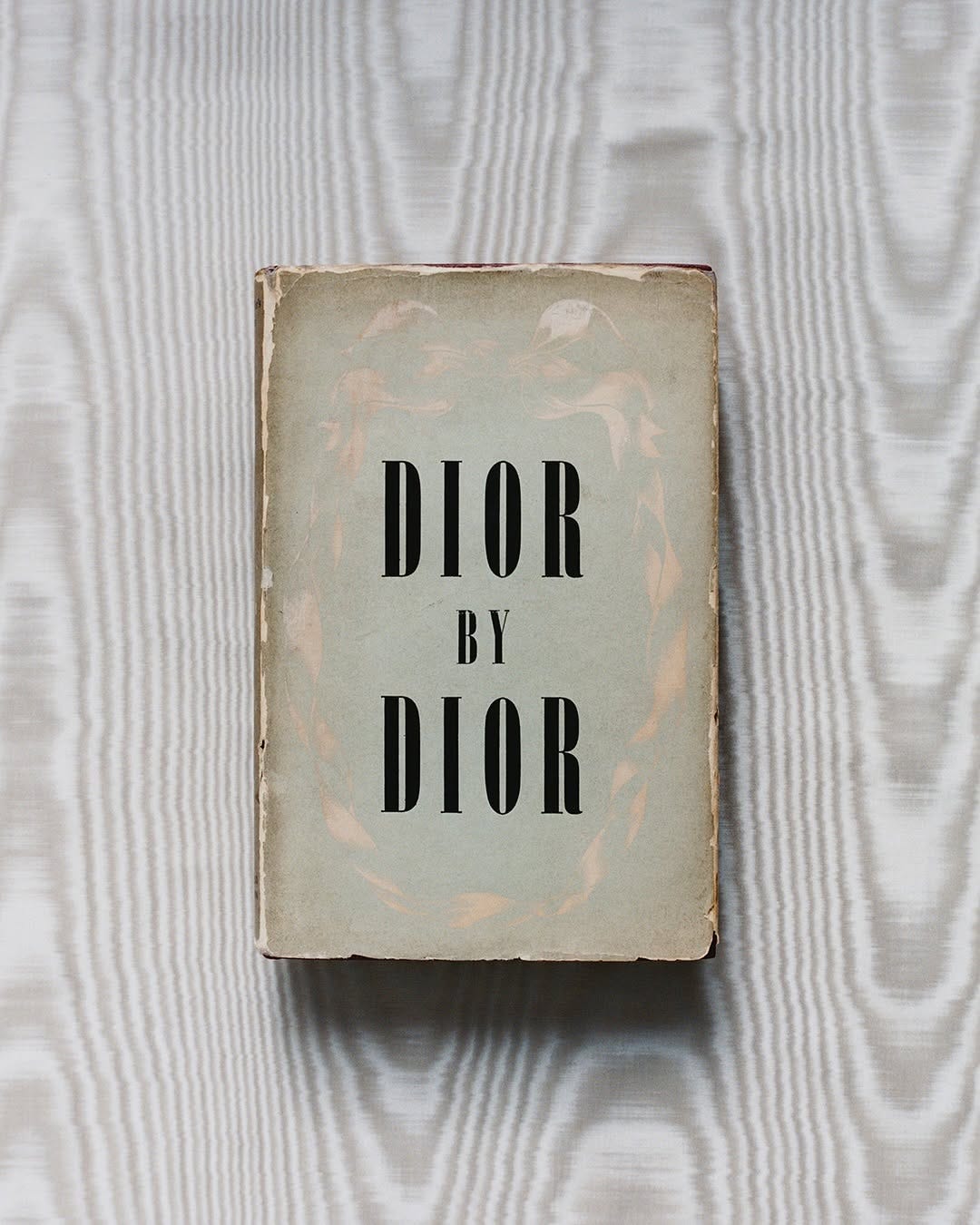Fragments Nº31: Walls & Bridges
Breaking down the Dior show rollout strategy and it's wider implications, and a radical take on 1980s 12inch records
“Anything you do. You have to do with zest.”
Among the reams of words, videos, voices, and takes that accompanied Johnathan Anderson’s Dior debut, 1 this headline in the brand’s TikTok bio seems to be the closest one gets to the manifesto and statement of intent behind what was presented.
But it’s also a fitting description of the strategy and creative ideas orbiting the show. Everything was done with zest. The rollout was an absolute masterclass.
This rollout is worth studying. Not divorced from the collection, but as a way to augment and establish the brand world of Dior under Anderson.
I just devoured the fantastic ‘John & Paul: A Love Story’, from Ruffian writer Ian Leslie, and among many ideas floated in the central thesis was this nugget from McCartney speaking to his (and by proxy The Beatles’) work in 1966.
“My aim with anything is to distort it, to take a note and wreck it. And see within that note what else is in it. Its all trying to create magic. Its all trying to make things happen, so you don't know why they’ve happened. “
Through that idea—a creative wrecking to reestablish something magical—acted as a through line both within the collection itself (aside from accusations of Uniqloism) and the campaign to roll it out.
It’s a demonstration of mastery in content and context. You might love or loathe the collection, but the reveals and burrows of the show, along with the content surrounding it, speak to something profoundly modern and contemporary about people’s attention span, their desire for knowledge, and their ability to extract value from those multiple layers.
I think this quote sums up much of what made both the collection and the way it was expressed special. It understood this central McCartney maxim, and channeled it through Dior’s own words: “Zest”
Within You, Without You
This post would be too long to establish every single drop and thread, which speaks to comprehensiveness and entry points that Anderson established throughout the week. However, they manifested across every single channel, subsuming both owned and earned channels into their orbit. Turning fandom around the show into its own media cycle, and subsuming it into the main narrative.
Each post, from the obtuse references to Basquiat and Radziwill to the more overt frogs and pins, acted as doorways into parts and partial views of what was to come. The bag drops, showed a connection to commercial hits, through a new lens.
It deployed niche references alongside out-of-context strangeness from some of the most famous people in the world. Mbappe - going from golden boot to hopeless amateur kept both the game and headfakes afoot. (45M views on TikTok don’t lie)
This constant sense of fragments piling up reached a crescendo on show day, augmented by a who’s who of designers and celebrities turning up en masse in this new uniform of Dior2. But that was the most literal part of it. Even the show itself, augmented by the Sam Nivola campaign drop on the same day, kept dropping hints and connections back to the brand's heritage, the content you saw in advance, and the stories they were implying. Moments of contextless content, mixed in with content stuffed full of context. Naturally, this is where the rest of the orbit around the show and the hype kicked in. Providing context, detail, and opinion that fueled the attention and interest in the show.
The orbit grew bigger and bigger.
A good example of this is the egg invite to the show. Initially, out of context, there’s a conversation around its meaning. Stripped of context, that search for meaning becomes its content.
It builds up the myth. This strategy saw every channel as a lever and bridge into the show, the collection, and the brand new. This extended to both the before, during, and after. Anderson himself documents refinfocred that McCartney maxim - take a note and wreck it, to see what else is in it.
Creating structure around this method is enormously vital for other brands, because, while there was inordinate attention on the show (which helped it to the top of the total media impression rankings according to Vogue Runway), the flooding of the zone created a sense of engagement and spectacle all its own. It also facilitates the connection between different parts of the business. It’s no secret that Dior’s beauty and fragrance business is a massive part of its commercial success. But more often than not, these worlds are walled off from each other.
But, under the radar, came Robert Pattinson’s ad within a show - his GRWM, with the new Dior Homme fragrance tagging along, collapsed the normally radically different fragrance world into Anderson’s new Dior.
Here, Anderson offered the clearest example of what I’ve dubbed the walls-and-bridges strategy. Within the Anderson’s sense of reconsituting the brand in McCartney’s image of creativity, the walls and bridges idea creates easy ways to enter the brand (the bridge) and more complex ways (the wall) to engage. The end result is two types of consumers: those who want to stay behind the wall, engorging on the brand and stories, and those who visit and want in on the action. If Bernard Arnault had their way, the drawbridges would be raised to keep people in the kingdom of Dior. You can scale it for the entire experience, from the moment you walk in. Your choice and way in.
The theme of walls and bridges for brands is in many ways a useful one for many fashion brands, not just at Mens, but it’s somehow amplified there. Take, for example, Rick Owens. Personally, it’s a wall without bridges - fearsome to climb, I guess, satisfying when it’s scaled. But it’s a wall that’s too intimidating for me. But that’s part of its obvious magic. Scaling the wall is a complex and challenging task.
It makes those who want in, really want in. The effort to understand, to unpick, to engage makes it sweeter once you’ve scaled it.
In contrast, you have Pharrell’s LV, which remains a triumph to ’stuff’ (with, as someone else noted, has clear “email from HQ” energy regarding commerciality), the stuff here ultimately felt like an idea and place I’d like to be in. The bridges are fully down on that brand, and the walls are just a mirage.
Yet, it’s literal - there’s no challenge there. Indeed, there were many lovely aspects I appreciated in it. Eminently wearable, eminently pleasant, but its openness leaves it exposed. There’s no mystery, nothing is probing there, which ultimately makes you think, ‘cool, okay.’ This nonchalance extends to the marketing of the show and its vision. It’s ‘cool, ok’.
This feels deeply ironic coming from Pharrell, who, in his first show, nailed down some of those core elements that make the walls and bridges idea interesting (to me, at least). He had the producer’s eye on the entire endeavour.
As I continued to refine this notion, it began to throw other brands into sharper relief. Brands that I follow, or have a genuine interest in their success. AMIRI is one of those.
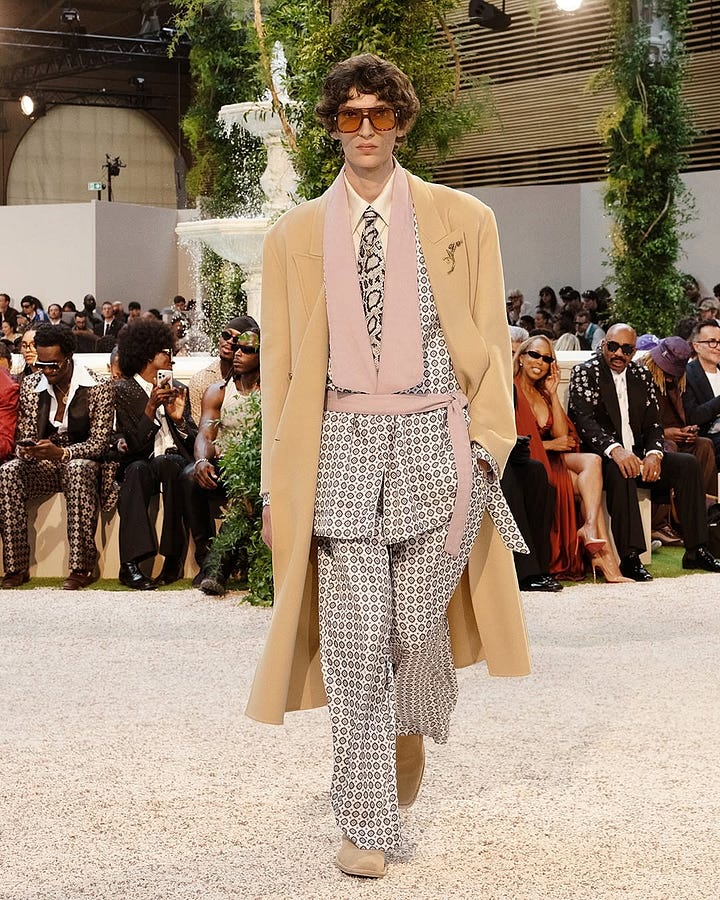
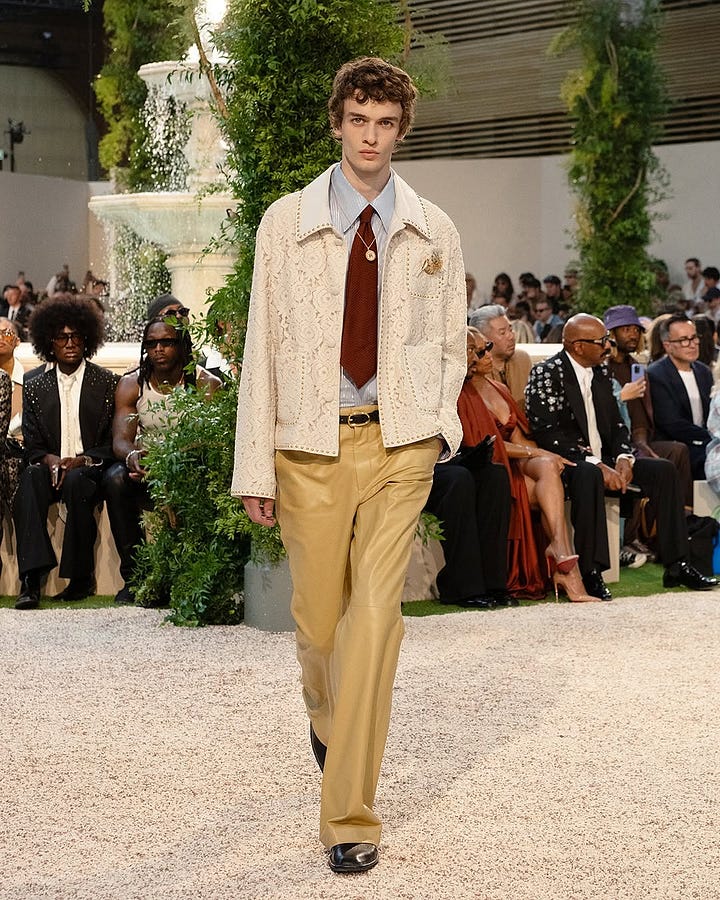


To it’s credit, AMIRI seems to have built a relatively robust wall around it’s chief inspirations and aesthetic world - it’s firmly a fantasia of Los Angeles, an LA that I think we all recognise doesn’t exist all that much in the land of Alo, but nonethless, still holds a sway. Reinforced by its wholesale adoption of Chateau Marmont meets Douglas Fairbanks, underpinning the most recent collection.
In some regards, the streetwear meets rock and roll sensibility that drove its initial growth still holds the brand back, but bit by bit, it’s a more mature and elegant world of spiky mogul-dom has become sharper. Yet, neither the walls (their level of complexity and intentionality) nor the bridges that are built around it feel entirely complete.
One adjacent to that is the launch of AMIRI sunglasses. While the shapes and styles draw help support the above proposition, they reinforce the fact that Jacques Marie Mage has only arrived first in terms of eyewear (and specifically this type of eyewear).
Still, the stories that JMM tell through their marketing are also VERY much the stories Amiri can and should be telling through their efforts. The clothes are good, now the brand needs to catch up and build more bridges into this walled-off Los Angeles.
JMM is the walls-and-bridges strategy writ large. It’s why it’s becoming so. Successful. Easy to access on one level, but all the better if you scale the wall to understand and delve into its references and its lore.
THE COPY AND PASTE CELINE
As I was writing this, Michael Rider’s teasers for Celine started popping up on feeds and OOH in Paris. Much like Givenchy, (ok ALOT like Givenchy), Rider and team have wrapped their story of Celine away. The tease is literal. Givenchy (which I have written about here, so don’t need to belabor the point) also wrapped themselves in mystery, which paid off in the clothes, but left the rest of the story unfinished, to its detriment.
While it’s grossly too early to judge if Rider’s Celine takes the same tack, the lack of bridges into this new idea of the brand, just walls, delivered in a flat, literal manner, doesn’t bode well because it seems to hew so closely to a very rigid structure of audience engagement. AKA, keeping it at arm’s length. Telling vs engaging. Silence might be a nice-to-have, but it doesn’t help build a relationship, which now sits at the heart of many of the best and most engaged fashion brands and their marketing efforts.
My hope is that the creative marketing teams and designers at Celine have been working together to tie this idea together. But the reign of the literal, masquerading as the obtuse, is still very much here.
But back to Dior.
Critically post-show, Dior didn’t let up in the content. It not only luxuriated in the moment, but also started to put more and more beat on the conceptual bone. What at first felt like glimpses and fragments was fully revealed at the show, enriched by what was added afterward. A complete course, context, concept, and creation as a drip-drip-drop methodology.
So why is all this important? Because it masters attention—and attention, like a muscle, builds over time. Attention isn’t quite attributable to sale, but salience is. Too often, shows, avant-garde to avant-yawn, are caught in a vice of conventionality, leading with a countdown, announcing vs. seeding, informing vs. intriguing. What is it, vs what it means.
Don’t believe me? Well, Lyas, an insider looking in from the outside, turned the collection into a spectator sport. Fashion’s ultimate final form. (An idea neatly surmised in Dot Dot Dot’s excellent ‘Who Still Holds the Power in Fashion? post).
In Morency’s idea , Lyas is one of ‘The Jokers’:
The Joker is part critic, part creator, part fan. A term used in the most flattering, positive sense, Jokers don’t come from institutional power but subvert it. They’re uninvited, but unavoidable. Ly.as is a Joker.
A digital commentator turned cultural bellwether, he recently hosted a public viewing party in Paris for Jonathan Anderson’s Dior Men debut, announced casually on Instagram. A hundred fans showed up. i-D covered it. Anderson reposted it.
It felt more alive than the official show. No access granted but just a moment created and claimed.
This template might be a one-of-a-kind, but the interconnected, creative thinking between brand, designer, creative, context, and content isn’t. It’s the standard. It’s time for luxury fashion brands to embrace some of the chaos and the raw creativity that Anderson’s Dior demonstrated. Fusing their creative and commercial brains in-house together, in that fusion, there’s experimentation, and that experimentation earns attention.
12 Inch Dubs
While reading ‘Rip It Up and Start Again’ a few months ago, the section that stood out most starkly was the world of new pop. Effectively, what we would know as that post-post punk era, where the spiky dourness that characterized that moment was replaced by a sparkly, but still steely, sense of melody and tunes returning music.
MIXCLOUD LINK HERE
This wasn’t all new romantics, though. At the heart of much of this music was a deep sense of radicalism, and referential layers, in particualr the work of ZTT (Zang Tumb Tumb.) which through it’s producer head honcho Trevor Horn and journalist turned existential Mogul Paul Morely turned new pop into an endlessly reoriantated and reworked sense of itself. Never finished, always adaptable.
ZTT, through its work with Frankie Goes to Hollywood, Grace Jones, and, of course, The Art of Noise, continued to refine and rework the 12-inch mixes of their most famous songs and artists. ‘Relax’, for example, had four out of five different versions at release. While not unusual today, it was radical at the time.
12-inch dubs of famous massive early 80s hits were quite popular, and as they have been lost to the mists of time, these 12-inch dubs form a wonderful, fragmented, and eminently danceable sub-genre of music history.
In an attempt to put some context around this moment, I recorded a two-hour exploration of this moment in pop history for my radio show on Love Will Save The Day FM.
I’m pretty pleased with how it turned out, TBH.
Until next week.
I can’t help thinking that the cohort of LOEWE coming over to Dior is somewhat counter-productive and the least ‘magic’ thing about it.

